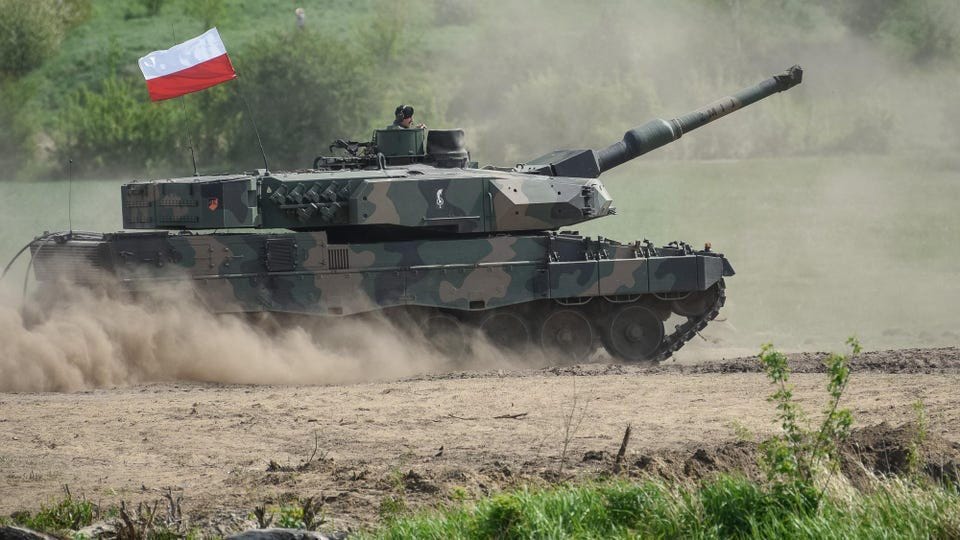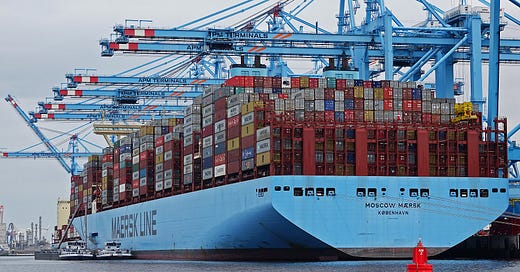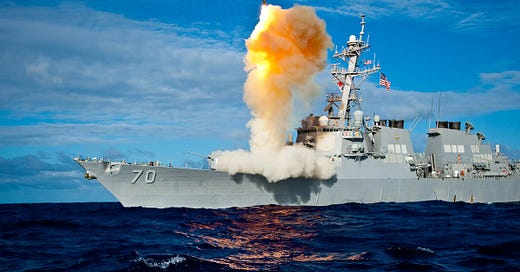

Discover more from Weapons and Strategy
Russia may be changing its strategy in the Ukraine War. Originally the Russian military operation in Ukraine appeared to have two objectives: a lightening strike on Kiev that would bring about the fall of the Zelensky government, and holding Donetsk and Luhansk by pushing back Ukrainian forces.
Logic says that if the first objective fails, as it did, then the second objective depends on the willingness of the Ukrainians to concede these territories to Russia, which Ukraine has not done, and thus the approach to Donetsk and Luhansk is unlikely to be successful.
It is true that Russian forces (including Wagner) are slowly winning back territory on the line of contact, although there also have been some counterattacks by the Ukrainian forces with limited success. But if Ukraine is supported by the US and NATO with no real limits, then the Russians will have to expect continuous and bloody war.
The Ukrainian-NATO-American strategy therefore is straightforward: bleed the Russians until they break, either on the battlefield or on their home front where they hope that the Putin government collapses. Recent Ukrainian attacks on Russian territory are aimed at demonstrating to the Russian people that there is no free lunch in this fight.
Right now the situation on the ground is partly the reverse of the Ukrainian-NATO-American strategy —the Russians are bleeding the Ukrainians and are in a systematic fashion depleting their air force, air defenses and artillery while, somewhat unevenly, also attacking Ukraine’s critical infrastructure. Yet there is no sign of any willingness by Ukraine or its sponsors to seek a political solution for the raging conflict.
This leaves the Russians in a quandary. The Russians can keep up fighting and pushing on the Ukrainian military, but this comes with a risk. If the Ukrainian military actually gets into existential trouble, NATO forces (in one way or another) may intervene. This could mean committing front line troops or it could mean using long range weapons from NATO soil, or even air engagements aimed at relieving pressure on the Ukrainian army.
It is probably true that some NATO countries will balk at starting a bigger war. Germany and France, for example are very unlikely to support the US or support NATO in such a venture. But the US has worked with “coalitions of the willing” before and could do so again. War, then, could come to Eastern Europe or beyond if the US spearheads a series of attacks to prevent the defeat of Ukraine’s army. There are already more than rumors that Polish military are inside Ukraine assisting Ukrainian armor and artillery. Where and when Polish troops in Ukraine become a casus belli between Russia and Poland is anyone’s guess. That’s up to the Russians.
But the current Russian strategy probably can’t achieve the stated objective of stabilizing Donetsk and Luhansk or forcing a political agreement without a change in tactics. It would appear, therefore, that the Russians are mulling their next steps.
On the ground Russia has operationally encircled Bakhmut and perhaps have trapped between 10,000 and 20,000 Ukrainian troops. Possibly the Russians are waiting for this part of their Special Military Operation to be completed in order to see what the Ukrainian authorities (and their sponsors) want to do next. Will Washington and Kiev decided it is time to negotiate with the Russians? Right now this seems unlikely, but a significant part of Ukraine’s army in danger of annihilation could force a change of heart.
For the Russians waiting to see how things develop is full of risks they may want to avoid. Holding back a large force outside of the line of contact ready to swarm over the Ukrainian army, sets them up as targets for NATO or for long range artillery sent to Ukraine by the United States. Either Russia would have to pull these troops further back into Russia’s hinterland, or let them gets smashed by artillery and rockets if they stay put, or expand the zone of military action while they can.
Russia has promised a new, big offensive and, despite claims the offensive has already started, the raw facts are that it has not. Moreover, no one knows what Russia’s military objectives are with a new offensive. What does seem clear is that the Russians cannot stand still.
It seems there are two possible scenarios for Russia, neither of which is mutually exclusive of the other. The first is to attempt a bigger territorial encirclement of Ukraine’s army. It does not seem this is in the works for the simple reason that Russia is not committing enough manpower and equipment to be successful. However, the Russians could be looking for more limited military operations that could include strengthening their corridor to Crimea or even attacking Odesa, which so far is not really on any war map. An operation like this might stretch the Ukrainian army beyond its capabilities.
The second possibility is to exploit the Bakhmut breakthrough and make a dash for the Dnieper river, closing in on Kiev. An operation like this is reminiscent of the Nazi Blitzkrieg, but it would only work if there was, along with it, something like the Schlieffen plan that could encircle some of Ukraine’s forces. Here the Russians may have ambitions, but whether they can pull it off and, at the same time, prevent American (or surrogate Polish and Romanian) intervention, is not at all clear.
The US also must consider its options. A bigger European war could shatter NATO and hand Russia an unexpected bonus victory. Support for the war is declining in most of Europe (the biggest exception the UK) and even if the US used a coalition of the willing, there is no guarantee that the unwilling won’t revolt. The Biden administration’s ultra hard line opposing a political solution is rapidly losing its luster. If the Russians start up a far bigger operation, Biden risks losing support where he needs it most, in the Pentagon. Every war game scenario on Europe run by DOD shows that the US and NATO cannot win in a head to head fight with Russia. And if some of the unwilling are strategically vital, such as Germany, then the US can’t stage a fight for Eastern Europe north of Poland. In simple terms, Biden is playing with fire, whether he knows it or not. Someone should tell him.














"Every war game scenario on Europe run by DOD shows that the US and NATO cannot win in a head to head fight with Russia". lol Someone better tell that to Ukrainian army.
Something else to think about: at what point do corrupt Ukrainian officials get nervous, raid the treasury and flee. A non-functioning government might be worse than a corrupt one. Picture a team who's out of the playoffs and just going through the motions.